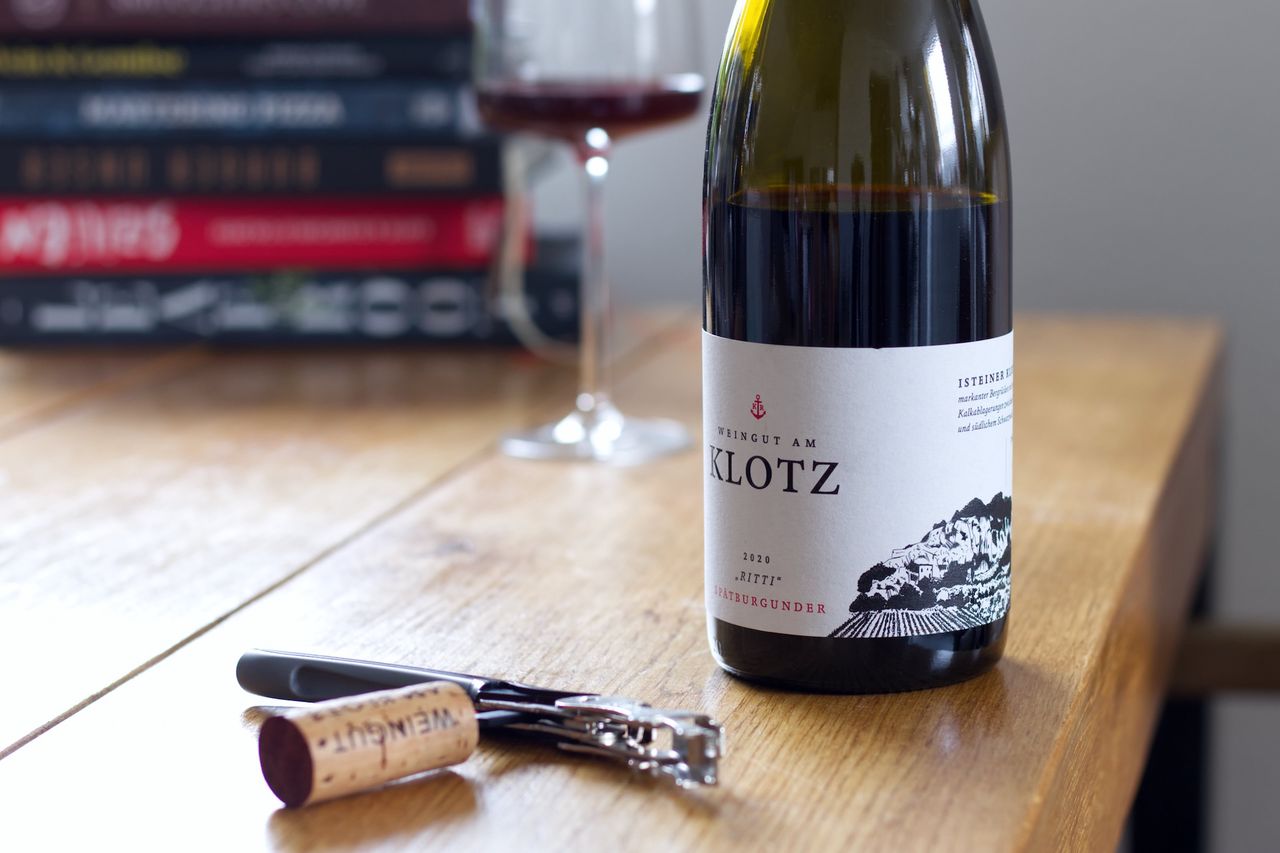Weingut am Klotz - Ritti 2020
We are kicking off a small series of Baden Pinot Noirs with a bottle of Ritti from Weingut am Klotz, vintage 2020.

The greatest insights often come to me when a bunch of wines share a common theme. The world of wine is vast, and the idea of having a comprehensive overview, beyond the occasional snapshot here and there, is something I’ve long given up on. Even Europe alone is so complex and diverse that you quickly reach your limits. Apart from trade fairs and other events, there’s no spit bucket on our table, so the next day’s fitness and the capacity of one’s liver set strict limits. Though I might eventually get myself one of those fish vases. Even though that’s probably intended as a flower vase anyway, not for the leftovers of tasting sips. What I mean to say is that it’s time again for several weeks of drinking with a single theme. In the coming weeks, our feet might turn yellow (and you will not understand this reference when not from Baden-Württemberg), but our glasses will be filled with red, as we dive into Baden and Pinot Noir (Spätburgunder). We start in the very south of the country, almost at the border. This is only fitting because two bottles from Weingut am Klotz were already in the glass during our last thematic stroll through Baden, and now we’re just reaching a little higher up on the shelf. The winery is still a joint project of the Keller and Reinecker families, who cultivate Burgundy varieties and Gutedel around the namesake Klotz. The vines for this bottle are located in the “In der Ritti” parcel above Istein on loess soil, hence the name Ritti. This particular bottle was probably pulled out of the wax with some flair, as there’s more air bubble than wax layer waiting for the corkscrew. As someone who dislikes wax capsules, this is perfect for me.
The fruit that wafts towards you as soon as you pour is simply fantastic. Berry-like, a bit rough, and then berry-like again. Somewhere between raspberries, currants, and sweet cherries. And that’s just from the first sip. The rest of the bottle has to wait due to the heat in the attic until the refreshing in-between cider has evaporated. That’s not a bad thing because a charming note of forest floor joins the fruit in the glass. Earthy, herbal, and then the fruit, is now the order of things when smelling. When drinking, it’s exactly the opposite. First comes cherry juice, then acidity, then cherry juice again, and then a fine, slightly earthy tannin. This is probably a textbook example of what’s called a fruit phase. Or fruit juice phase, because if you’re not careful for a moment, the glass is empty again. Surely the fault of the better half across the table, no way it was me. Great wine.
And even on the second evening, this remains one of those wines that, when poured from two meters away, still clings to your nose immediately. It’s still intense and berry-like right when poured. Absolutely beautiful. What took the duration of a cider on the first evening now happens within seconds. It becomes earthy, herbal, substantial. The acidity now pulls the rug out from under you with the first sip, and if you didn’t know better, it could be sour cherry juice. This is the essence of juiciness at first, before earth, herbs, and structure also come into play. The tannin is silky smooth, the wine is complex, elegant, yet still intense. And just incredibly juicy. And it hints at where it could go in the coming years. The fruit becomes a bit darker, more balsamic, and retreats more into the underbrush. This will surely age beautifully, really beautifully, but if you don’t uncork at least one bottle during this phase, then there’s no hope for you.